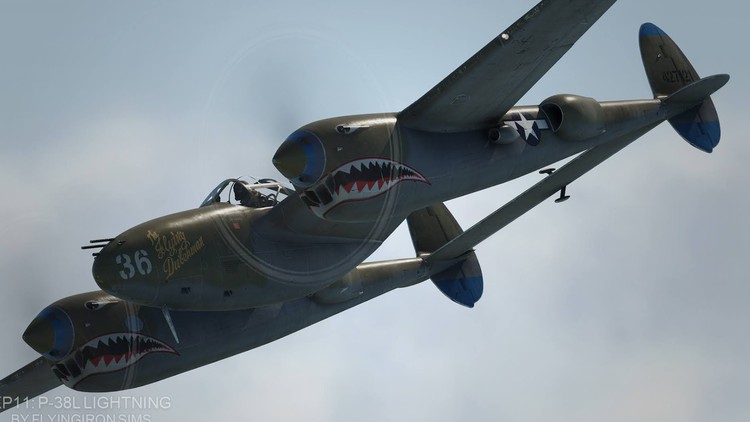
What you will learn
Learning how to handle and fly Classic warbird aircraft.
No time limit. Take as long as you like to fly on your own PC in VR.
Totally safe flying in VR in your own home.
To give the student pilot a really good I deal of what is going on in the cockpit of the real aircraft.
Description
Unmistakeable. Terrifying. Master of the skies: The fork-tailed devil.
With over 10,000 built between 1941-1944 (and nearly 4000 of these as the P-38L), the P-38 Lightning is an iconic American Warbird, easily distinguished by its unique twin-boom and central nacelle design. The ‘’Fork-tailed devil” inspired terror across Europe & the Pacific as not only a fighter, but a highly effective fighter-bomber, night fighter and long-range escort.
The Lightning is capable of speeds up to 414 mph and an excellent rate of climb, powered by its powerful twin Allison V-1710 Engines. The Allison engines drive a 3-bladed Curtiss Electric Constant-speed propeller, counter-rotating to eliminate yaw tendencies, generating up to 1600 HP in each engine at a 2:1 gear reduction ratio. Dogfight performance is improved drastically with the addition of innovative technology for its time, such as the hydraulically powered Aileron Boosters, Manoeuvre flaps and Dive Flaps.
The Lockheed P-38 Lightning is an American single-seated, twin piston-engined fighter aircraft that was used during World War II. Developed for the United States Army Air Corps by the Lockheed Corporation, the P-38 incorporated a distinctive twin boom design with a central nacelle containing the cockpit and armament. Allied propaganda claimed it had been nicknamed the fork-tailed devil (German: der Gabelschwanz-Teufel) by the Luftwaffe and “two planes, one pilot” by the Japanese. Along with its use as a general fighter, the P-38 was used in various aerial combat roles, including as a highly effective fighter-bomber, a night fighter, and as a long-range escort fighter when equipped with drop tanks. The P-38 was also used as a bomber-pathfinder, guiding streams of medium and heavy bombers; or even other P-38s, equipped with bombs, to their targets.
Used in the aerial reconnaissance role, the P-38 accounted for 90% of the aerial film captured over Europe.
The P-38 was used most successfully in the Pacific Theater of Operations and the China-Burma-India Theater of Operations as the aircraft of America’s top aces, Richard Bong (40 victories), Thomas McGuire (38 victories), and Charles H. MacDonald (27 victories). In the South West Pacific Theater, the P-38 was the primary long-range fighter of United States Army Air Forces until the introduction of large numbers of P-51D Mustangs toward the end of the war. Unusual for a fighter engine power was boosted by turbosuperchargers giving the P-38 good high-altitude performance, making it one of the earliest Allied fighters capable of performing well at high altitudes. The exhaust was muffled by the turbosuperchargers, making the P-38’s operation relatively quiet. It was extremely forgiving and could be mishandled in many ways, but the rate of roll in the early versions was too low for it to excel as a dogfighter. The P-38 was the only American fighter aircraft in large-scale production throughout American involvement in the war, from the Attack on Pearl Harbor to Victory over Japan Day.
Content
Introduction